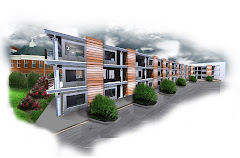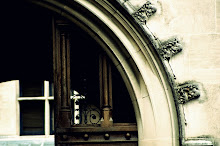These articles inform its readers of the fascinating innovations that are taking place on a global level in the world of simulation and visualization. It is incredible the ability to design for different environments, environments that experience the extremes, with the tools provided by computer aided design. With programs such as ecotecht, designers are able to design buildings and study the air flow and ventilation without having a physical model present. Not only that, but designers are also able to design for environments with extreme climates and take advantage of the natural surroundings to create a building that "works" to provide a comfortable and healthy space for its inhabitants. All of this is encompassed in the article Model Behavior: Anticipating Great Design. This article presents several examples of how this technology is being implemented in design today. The Masdar headquarters is an ideal example of how air flow can be analyzed to develop a natural ventilation system for a building.
The second example provided is the ability to study the movement of sand in correlation with the structure of a building to examine how damaging these minute particles can be to the surface of a building. Furthermore, this technology enables designers to make decisions based on how well conceptual ideas will work in the physical environment. The example provided is a structure designed by Snohetta and called for sunken courtyards or wells, but a concern for this was that sand and particulate would fall out of the airstream and fill these wells up. Before, this would have had to have analyzed through physical models, but now it can be studied through simulation technology and can inform the design more efficiently.
The second article discusses how simulation technology can aid in the study of daylighting for different uses. This article focuses on museums and how daylighting can be taken advantage of without any of the harmful affects that uva rays generally have on artwork. The light studies go further to explore how light can be manipulated through louvers and the exploration of illuminance levels to provide a space that optimizes the visual comfort of its inhabitants.
The third article discusses how technology can be used retrospectively to study existing structures. Using a visually transparent breakdown of the forms that combine to create the Darwin D. Mountain house designed by Frank Lloyd Wright. Through this study researchers were able to discover the unique relationship between the fireplace and the rest of the house.
"In the machine lies the only future of art and craft." Wright believed that the future of design is intrinsically tied to technology as do I. Technology is a tool to aid designers in the ability to design buildings that not only reflect the humanity of design, but also improve the quality of life.
Monday, February 22, 2010
Subscribe to:
Post Comments (Atom)



No comments:
Post a Comment